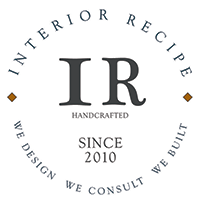
The Art of Biophilic Design: Creating Serene Spaces with Interior Recipe
In today’s bustling, high-speed world, our bond with nature frequently gets sidelined amidst daily routines. However, biophilic interior design emerges as a groundbreaking approach, aiming to restore this vital connection by seamlessly integrating natural elements into our homes and workplaces. This approach transcends traditional aesthetics, offering a philosophy that blends nature with interior design to foster environments that are not only healthier but also more conducive to productivity and creativity. Join us as we explore the profound impact of biophilic design on interior spaces, unravelling its influence on home design and decor.
Understanding Biophilic Interior Design
Biophilic design is based on the idea that people naturally love nature. This kind of design means adding things like plants, water features, natural light, and materials like wood and stone into our homes and offices. It makes spaces look better and can also make us healthier and more productive.
Health Benefits
Using biophilic design in our spaces can be really good for our health. For example, having natural light helps keep our sleep cycles regular, which can improve our sleep and mood. Being around plants and natural things indoors can help us feel less stressed, lower our blood pressure, and make us feel happier. Biophilic design isn’t just about making spaces look nice; it can actually help us feel better too.
A Fresh Way to Design Homes
Biophilic home design means making your home feel close to nature. It’s more than just putting some plants in your rooms. It’s about making nature a key part of your home’s design.
Incorporating Natural Elements
Natural elements are the cornerstone of biophilic home design. This can include the use of natural materials like wood and stone, incorporating living walls, and ensuring ample natural light through large windows or skylights. Water features like indoor fountains or aquariums can also bring a sense of calm and tranquillity to the home.
Designing with Natural Patterns and Shapes
Biophilic design also involves the use of natural patterns and shapes in home decor. This can be achieved through biomorphic forms and patterns that evoke nature, such as leaf-shaped accessories or furniture with organic curves. These elements subtly remind us of our connection to the natural world.
Biophilia Home Decor: Merging Aesthetics with Nature
Incorporating biophilia into home decor is about finding creative ways to bring the outdoors inside. This can be achieved through the use of natural colours, textures, and materials that mimic the outdoor environment.
Color Palette and Textures
The colour palette in biophilic home decor often includes earthy tones, greens, and blues that reflect the natural world. Textures play a crucial role as well; for example, using wood, jute, or stone can add an organic touch to the decor, making the space feel more grounded and connected to nature.
Sustainable and Eco-Friendly Choices
The biophilic design aligns closely with sustainability. Choosing eco-friendly and sustainable materials, such as bamboo flooring or recycled textiles, not only supports the environment but also adds a layer of natural authenticity to your home.
Technology and Biophilic Design
Advancements in technology are also playing a role in biophilic design. Smart home systems that regulate natural light, monitor indoor air quality and maintain living walls are becoming integral to modern biophilic interiors. These technologies enhance our interaction with natural elements, making biophilic design more accessible and effective.
Conclusion
Biophilic interior design is redefining the principles of modern interior design. By integrating elements of nature into our living spaces, we are creating environments that enhance our well-being and connect us more deeply with the natural world. For anyone inspired to infuse their home with the essence of nature, Interior Recipe offers expert guidance in biophilic design. Visit Interior Recipe to start your journey towards a space that’s not just visually appealing but also enriching for your lifestyle.


